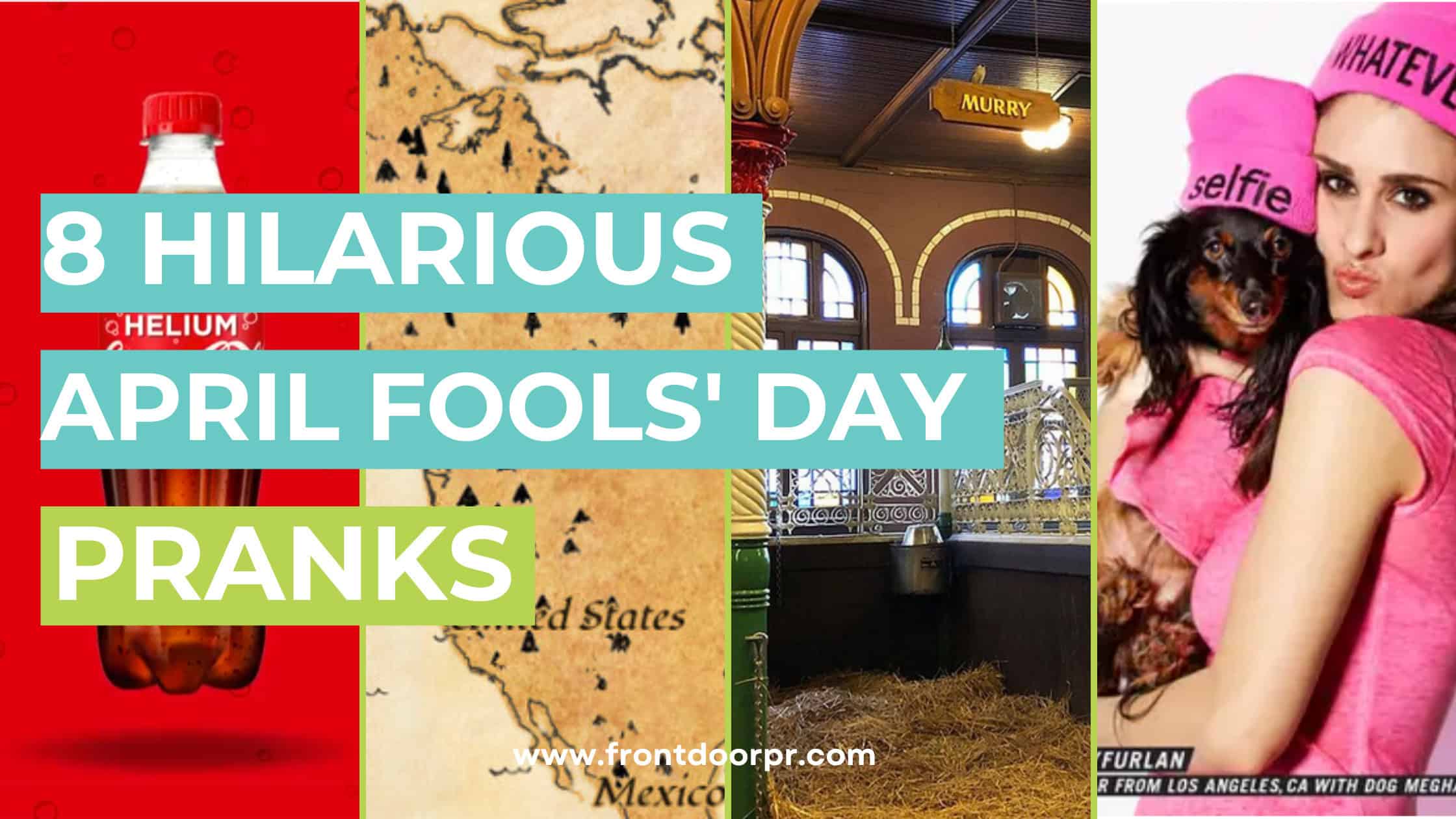Want to create a Kick A$$ Integrated PR and Content Marketing strategy for your business, brand or event but don’t have the time to do it?
Neither do we!
Over the years we’ve learned that you can’t do it all. And while Social media is very important, if you can’t hire someone to do it for you, you’d better find a way to plan your content marketing and social engagement so that you can create effective, engaging and consistent content across all platforms. Our media background ingrained in us that you have to be strategic with your time and resources and REPURPOSE your content across all department, so in your case, platforms – traditional, online and social media.
Its really quite simple but seems pretty involved at first. Believe us, we’re all about making things easier, once you get the hang of this you’ll be off to the races and will have generated enough content from one or two blogs to keep you busy for a month.
To start, we encourage you to create or use our editorial calendar below as a means of brainstorming. Next determine what you want to talk about or blog about it. From there you can create a press release or pitch and start a social media campaign using the tips and key ideas you share in your blog. Now on those tips by communicating them to your audience, where they live (which platforms – each audience has two or three preferences – we’re not looking to blanket the world with words and hope someone notices) and in the language that they speak. That’s the key: know who you are talking to, where they talking, and talk WITH them, engaging in a conversation that will benefit them and not be a blatant infomercial for you.
Most people are familiar with Editorial Calendars and use a personal or commercial version of one to plan and manage their blog posts and set themes for your messaging. While editorial calendars have always been part and parcel of most traditional media outlets, focused on themes, seasonal & holiday-related stories, and timely & relevant news, they have not been utilized to their full benefit in social media. Many use HootSuite to plan and create their social media yet much of the messaging that is put out there seems to fall into one of two categories:
- A single message shared on multiple platforms that have been linked together ie. Posting a message on Facebook that is automatically shared on Twitter and LinkedIn
- Completely separate messages across different platforms that are not consistent or coordinated with each other, and have no relation to current marketing, messaging or themes. This makes your personal platform seem disjointed, inconsistent and quite frankly confusing. If you are pitching an event or a product but sharing pictures of puppies or cats (which can work if it ties in with your theme given that crazy cats are a major hit on social media) or touting too many themes or campaigns, it can take away from your credibility and authority in that space.
Marketing strategy and media planning no longer occupy their traditional silos any more, functioning as individual mediums to target and pitch to. Rather, we have moved to a global approach to marketing and PR, embracing the idea of Integrated Marketing. Integrated marking put the focus back on the message and your audience, focusing on your unique value proposition and solidifies your place as a thought leader or subject matter expert in your space, rather than pitching your products and your needs. The goal shifts to creating a valuable and engaging message specific to your audience, targeted to their needs, to be shared it across all platforms, speaking in the language of that platform, with the goal to engage, build a community and through that community, using that community, generate likes, encourage sharing and confirmation to their networks and build awareness for your company, your brand or your event. It sounds complicated but its really not. It’s about creating a conversation, sharing your expertise and letting people know where you are once they know how you can help them.
Creating the Conversation
You are the authority! Remember that. If you work it, volunteer it, live it, or are interested in it, you likely know more about it than 90{19da51813cb95136a27d3b7892adccd6c9432b99f522e9a7ac57918fe1b3ae04} of the people you are connected with. Creating ongoing conversations that showcases your knowledge and value with your community or your network is contingent to building a good content marketing strategy. To create the conversation you have to know what your audience may be thinking about or needing at a given time, along with what and how much they are willing to invest. Peppered with some personal anecdotes to create resonance and understanding of your approach and your personality, building a content marketing/social media/editorial calendar doesn’t have to be difficult. How you pose, or shall we say what you post, depends on your audience, and the value it will bring into their lives or businesses, how it can improve what they are currently doing (like, for example, this blog post) and how engaging you are to them. Like attracts like.
The content or theme usually dictates our approach to building a calendar like this for our clients or else providing them with the tools to create their own with or without a social media manager. Currently, the content we see on social media seems to be driven by a personal mission statement to be noticed – look at me; see what I’m doing; share me; like me; me, me, me! Where did the ‘WE’ go? As far as I recall, a conversation with one person is usually called a monologue, and online, it’s generally understood as a pitch. And no one likes to be sold these days.
But as Marshall MacLuhan so famously said, The Medium is the Message. And in our view, from a P.R., Media and Content Marketing Perspective, (and we won’t claim this to be academically sanctioned or an iron clad rule but tried and true based on our clients successes), an editorial calendar is really a planning tool that you use to ensure that your messaging and your conversations stay on brand and most importantly, speaks in the native language of the land. What you say needs to be meaningful to others, it needs to be consistent with your brand and your brand philosophy and values, and others need to find value in it.
It’s all Greek to me: How to speak in the language of the platform
Some of the most confounding things we see online are tweets, status update or LinkedIn updates that are messages created across another platform and positioned for that audience using @, # and LOL!! where not appropriate.
Does your LinkedIn community of potential employers or clients really need to know that you are ‘SMDH’? We didn’t think so? For each community you will be speaking to be it social or business, ask yourself, what would be the best way to share my message, tips or expertise with them in a way that they would appreciate or use. Specifically with LinkedIn, how could I take my recent article, blog or pitch and use that content to inform a business-minded community with their interests and needs in mind?
Using a recent blog post on Summer Learning Gap as an example, we have created an example of how to share that information across each platform in a way that makes sense. This is especially beneficial if you are launching a product, book, campaign or have a monthly theme you want to generate awareness about.
What you need to know about the Platforms
The strategy behind this integrated approach with social media messaging is to inform and engage. While you may not get direct conversions via any one or all platforms or messages, it will build brand presence and familiarity and bridge the gap between knowing a ‘name’ and understanding their philosophy and approach via their posts, content, keywords and focus.
Each type of social media has a different type of messaging proposition and audience:
Blogs are the King of content marketing and allow for you to have your voice however you want it, whenever you want it. The gates of media have been brought down and the gatekeepers have become relegated to major news, breaking news and pointed inquiry. The traditional news media and journalists are still the most credible and trusted source for news, but now you can share information, thoughts, opinions, profiles and reviews with the click of a key. Share your expertise and knowledge, provide tips and tricks of the trade and showcase your expertise. This is not giving away your trade secrets but rather solidifying your position as an expert that others will seek out for services, products and speaking opportunities.
Facebook posts are to be more social and fun (here you can tease your audience); you can post information but direct pitches and self-indulgent ads are not highly regarded. Try to post promotional pitches sparingly.
Twitter more information-sharing and inquisitive. Pose questions, tease related articles and blogs, and ask for opinions. Short and concise is key, nothing hammy or cutesy. Build a community and connect with the people otherwise not available to you. It’s ok to share a Facebook message on Twitter as an update, but not the other way around.
Instagram dubbed the visual Twitter, its owned by Facebook now and builds its base on visuals and video. There are no character limits, no reposts (unless you download an app) and easy sharing across other platforms. Humans are visual beings and this platform is gaining traction with Millennials and Gen Z who prefer its less ‘businessy’ or political focus and for social dynamics.
LinkedIn more geared towards supporting your business platform, career offerings and brand messaging…i.e. more professional. Keep status updates in line with your knowledge base and expertise – no funny or motivational posts needed. Infographics are hugely popular. Join and engage in groups. Post blogs and start conversations within your targeted group to reach influencers, future ambassadors and decision makers.
Pinterest is the #1 place for women, especially moms, to get ideas, samples, worksheets, pictures and information that is family/female-related, funny or idea generating. Even if you don’t have something to post that is specific to your audience, related to your product or service, know your audience and pin things you think they would like. ie. Moms are always looking for tools, charts and motivational messages.
YouTube – Google’s little bro, everyone should have a channel to curate and share their video content on. It allows for links and even a change to make some money if you can generate popular content. Video results also stand out on the search results page. If you can, get a YouTube partner account. Snoop Dog has one! It’s free and offers more editing functionality. One last note: No one has time to watch long videos – limit your vlogs or videos to 90 seconds to 3 minutes. Even 60 seconds is great. If you have more to say, create another video. With cell phones and simple camera equipment anyone can share their unique voice, and visuals, with the world.
There are dozens of other established and emerging social media that millions of people use every day including Snapchat, yet another major social media platform. The key is to know who your audience is, where they live, what they like or seek and to go join them in conversation ‘where they live’.
How to Maximize & Integrate Messaging
Blog: Offer solid information, suggestions and tips that readers and seekers can use to support their businesses; improved their lives; help their families or provide solutions. Tips and directions that are seasonal and timely are key. Create Google alerts to see what others are writing about, the issues they are focusing on and topics traditional media are reporting on. You can add to another bloggers post if you include their link or snippets from it providing you give full accreditation. Requesting permission to repost is advisable.
Every blog should have 7-12 ‘tweetable’ ideas, suggestions or conversation starters. Building your editorial calendar from your blog topic is the easiest way to start.
Facebook: With this understanding the approach should be to create anticipation and tease ahead of the launch – hopefully garnering some attention. Following the launch I would like to see Facebook updates be engaging with our ‘friends’ while highlighting our feature set in a subtle manner.
Twitter: Twitter updates should be regular and tie into but not mimic Facebook Status updates and then some initial engagement with our followers. Find relevant groups to give tips and ideas to. A daily update featuring information on the launch progress or article-sharing will be the best approach. Likewise the use of infographics when sharing.
LinkedIn: LinkedIn updates will be professional and geared to the business community providing corporate communications, corporate updates and outreach. You can find more elite groups here related to education and parental needs.
Pinterest: Pinterest allows you to “pin” anything cool and unrelated to your corporate brand but build your following by giving your target audience the information, resources and fun stuff they are attracted to, and will share. Find all the key things you think your target market (moms) may be seeking, ie. recipes, charts, tools, funny kids stuff, mom stuff, crafts, activities, and just put them under your banner. Post informational posters, flyers and events – from you and your affiliates.
YouTube: YouTube allows you to broadcast your messaging and your ideas in an engaging and informal way. Technology allows for easy recording of your tips, ideas, messages and well, videos (fun and funny is always a good idea). Craft messages that are 60-90 seconds for best results and have 30 second teaser videos to your e-blasts.
Always shoot horizontally for optimal viewing (don’t fall victim to Vertical Video Syndrome!) and include a call to action at the end. Include your website on a banner. Remember to just be yourself and be happy to do it!
Instagram: Instagram is the visual Twitter. It’s simple, fun and not controversial. Share your messages and ideas without character limits and use hashtags freely. Play with filters for fun effects. Best if images are short in “square” mode. You can share your brand, your messaging or your events using pictures of preparations, updates and tips.
Keywords
Figure out 8-12 keywords that you will use consistently and purposefully in all on-line and social media.
*Please note that a list of significant holidays, events and noteworthy news within the community is key. Find events and groups that may be good to target for connections, engagement and promotional opportunities.
**You can have multiple posts per day. Don’t be shy about having a several themes if they are relevant and informative…and consistent with the conversation you are having on your website or that others are having online or in the news. Don’t be shy to jump on trending topics.
Google Alerts
You’ve come this far, now there’s one last thing – Google Alerts – have one on yourself, your business and your areas of expertise. When you’re stuck for something to talk about, it’s an easy way to get in on the conversation that’s taking place in cyberspace and jump on the chance to add your voice to the conversations.
Once you’ve done all that – commit to doing it for a few months and watch your level of engagement, following, and new contacts grow.
And you are welcome! If you’ve learned anything, please let us know! We’re friendly and love opening the door to new friends.
Calendar Template
Want to download our pre-made calendar template? Here you go! It’s in PDF format so you’ll need Adobe Reader or another appropriate reader.





